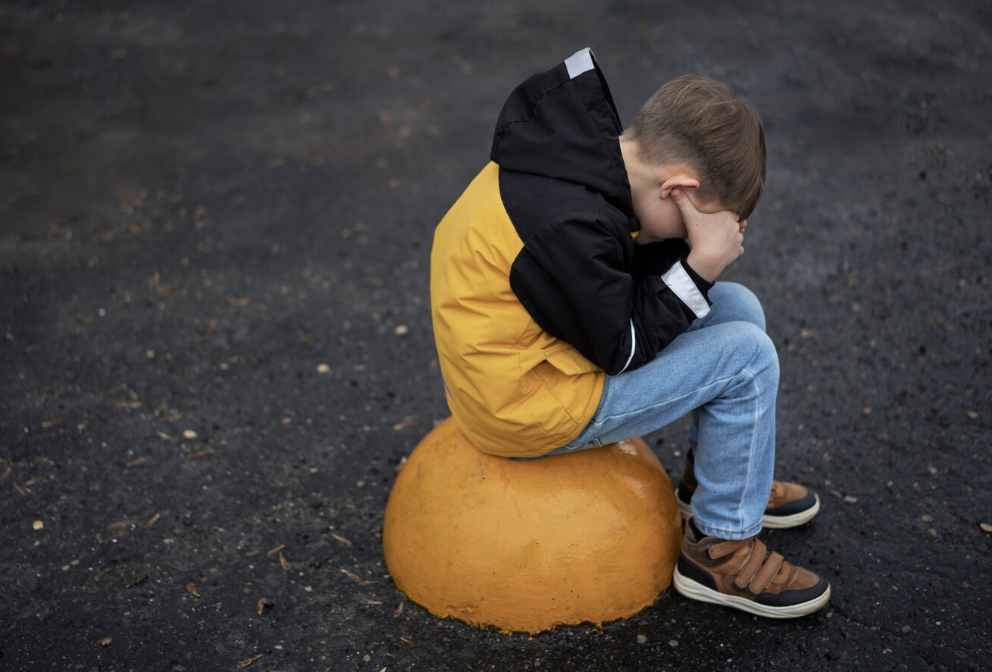Depression in Children: A Guide for Parents
by Anne Ueberbach
Assistant Director / Counsellor
Depression in Children: A Guide for Parents
As parents, the last thing we want is to see our child/ren suffer or struggle, including any mental health challenges.
Depression in children can be a scary experience for parents, especially if they themselves have not had experience with depression or other mental health conditions before. There’s good news though, with early intervention, support and guidance, depression can be managed successfully. By identifying the signs and symptoms of depression and taking proactive steps, you can empower your child to build resilience, navigate challenging emotions, and thrive in the long run.
Depression in Adults vs Children
Depression can affect us at all ages, but its presentation and impact can vary significantly between adults and children. Recognizing these differences is crucial for accurate diagnosis, effective treatment, and compassionate support.
Depression symptoms in Children:
Persistent feelings of sadness, hopelessness, or worthlessness
Irritability, anger, or aggression
Withdrawal from social activities or friends
Changes in appetite, sleep patterns, or energy levels
Difficulty concentrating or paying attention
Physical complaints (e.g., headaches, stomachaches)
Clinginess or separation anxiety
Depression symptoms in Adults:
Persistent feelings of sadness, hopelessness, or emptiness
Loss of interest in activities, hobbies, or social interactions
Changes in appetite, sleep patterns, or energy levels
Difficulty concentrating, making decisions, or remembering things
Feelings of guilt, worthlessness, or helplessness
Key Differences:
Expression of emotions: Adults tend to verbalize their feelings, while children may act out or exhibit behavioral changes.
Cognitive understanding: Adults have a better understanding of their emotions and can articulate their thoughts, whereas children may struggle to express their feelings.
Developmental context: Children's depression is often linked to their developmental stage, social environment, and family dynamics.
Global Children Depression Statistics
According to the World Health Organization, depression affects approximately 2% of children and 8% of adolescents worldwide. Depression is most common in teenagers, however it can be diagnosed as early as 3 years of age. Globally, about 4.4% of 3-5 year-olds have diagnosed depression, 4.7% of 6-11 year-olds, and 8.4% of 12-17 year-olds. Additionally, the teenager age group also reported experiencing persistent feelings of sadness or hopelessness (36.7%), and having experienced a major depressive episode in the past year (15.1%).
What Causes Depression?
While there is no single-known cause for depression, research has identified that depression stems from a combination of influencing factors:
Genetics – family history of depression a history of other mental health conditions (if both parents have a history of depression, the chances that their child will develop depression at some stage in life jump to 75%)
Trauma – Physical, emotional, or sexual abuse; neglect; or bullying
Stress - significant life changes, such as moving, divorce, or loss of a loved one, severe academic stress
Social & environmental factors – lack of support, social isolation, family conflict or dysfunction, exposure to violence or abuse, academic pressure, etc.
Biological – hormonal changes and imbalance of neurotransmitters like serotonin and dopamine (happy hormones)
What Parents Can Do
1. Encourage open communication, empathy, and understanding.
Utilize active listening strategies (such as actively listen, asking open-ended questions and validating emotions) to give your child undivided attention and show that you’re truly engaged in the conversation without being distracted or attempting to multi-task. You can also encourage your child to continue sharing by using non-verbal behaviors, such as head nods. Creating daily opportunities for conversation during usual activities like car rides, mealtimes or walks, creates chances to connect and talk without putting your child on the spot. It is important to avoid any scolding, criticism or judgment, even if you don’t agree with your child’s opinions or actions. The goal is to create a safe space where your child feels comfortable sharing their thoughts and feelings without fear.
2. Watch out for behavioural, physical or emotional changes
Take note of your child’s usual “normal” and look out for any changes to their mood, behaviour, physical health and emotional wellbeing:
Social Interactions:
Avoiding social situations or friends
Difficulty making or maintaining relationships
Feeling isolated or disconnected from others
Academic Performance:
Decline in grades or academic interest
Difficulty completing homework or assignments
Lack of motivation or enthusiasm for learning
Physical Health:
Changes in eating habits or weight
Sleep disturbances or fatigue
Increased physical complaints or illnesses
Mood:
Increased irritability, restlessness, or frustration
Persistent feelings of sadness, hopelessness, or emptiness
Mood swings or emotional reactivity
Behavior
Withdrawal from activities, friends, or family
Changes in appetite, sleep patterns, or energy levels
Difficulty concentrating, paying attention, or making decisions
Increased clinginess or separation anxiety
Emotional Well-being:
Expressions of guilt, worthlessness, or helplessness
Increased anxiety or worry
Physical complaints like headaches or stomachaches
Difficulty articulating emotions or needs
3. Encourage Healthy Habits
Healthy habits can have a profound impact on your child's mental health and well-being. By promoting regular exercise, balanced eating, and sufficient sleep, you can help your child develop resilience and better cope with stress and anxiety.
Regular Exercise: Ensure your child engages in a physical activity they enjoy, such as sports, dance or simply playing outside, for at least 60 minutes per day.
Balanced Eating: It is no secret that food has a big impact on our mental and physical health. Encourage a diet rich in whole foods, fruits, vegetables, whole grains, lean proteins, and healthy fats. At the same time, limit processed foods, and food high in sugar, salt or unhealthy fats. If unsure, consider consulting a dietician to create a meal plan that suits your family’s needs.
Sufficient Sleep: Establish a healthy bedtime routine, and aim for 8-10 hours* of sleep (*depending on the age group, your child may require more sleep). You can also follow sleep hygiene strategies, such as limiting screen time prior to bed, following a bedtime schedule, and ensuring the bedroom is sufficiently dark and quiet.
4. Seek Professional Help
Consult a mental health professional, such as a qualified counsellor, psychologist or psychotherapist, if you suspect your child may be struggling with depression or any other mental health concerns. A therapist will support your child in developing healthy coping strategies, build relevant skills, process emotions, reframe negative thoughts, and overall lead your child towards gradual independence in managing their mental health. Therapy goals may include Improved mood and reduced symptoms of depression, enhanced coping skills and resilience, better relationships with family and peers, increased self-esteem and confidence, and improved academic and social functioning.
You may also wish to seek support from a qualified counsellor, psychologist or psychotherapist for yourself, to help you better understand your child’s condition, but also how to best support them on their journey, as well as to address your own feelings towards everything and the stress that comes with it. A therapist can also support you in collaborating with your child’s teachers and other health professionals to provide holistic support across all areas.
If you believe you or your child may require professional support, book an appointment with me at The Counselling Place Singapore to address these concerns today.





